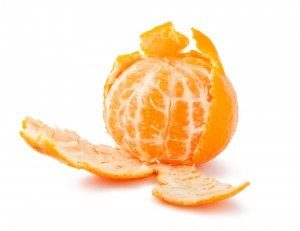How did you get on with the pelvic floor exercise from last week? If you have any questions then please just ask.
I’m hoping by now we will have had a chance to use the spikey balls or hedgehogs in one of your classes!
Both pieces of equipment are tools that help to release fascia and therefore help you to move more easily.
What is fascia?
 Fascia is a clingfilm-like substance that wraps all around our muscles, bones, nerves, arteries, veins and internal organs (heart, lungs, brain, spinal cord). It’s a sensory organ, holds us together and connects the entire body.
Fascia is a clingfilm-like substance that wraps all around our muscles, bones, nerves, arteries, veins and internal organs (heart, lungs, brain, spinal cord). It’s a sensory organ, holds us together and connects the entire body.
If you picture an orange, fascia is similar to the white layer beneath the peel that surrounds each segment.
Fascia can be affected by physical trauma (car accident, a fall, poor posture, repetitive stress injuries), emotional trauma, scaring and inflammation. It can become tight, tense and be a cause of pain and restrict movements in the body.
How to look after fascia
Hydrated fascia is happy fascia!
Imagine a sponge that has dried out, it becomes brittle and hard. When the sponge is wet and well hydrated it is springy, resilient and can move in all directions smoothly and effortlessly. You can wring it out and twist it but it is difficult to break.
Fascia is similar to a sponge.
Here are some ways you can look after your fascia:
Drinking enough water is helpful to keep fascia hydrated but it’s also important to ‘wring the sponge out of old water’ and ensure the water can get to the sponge (fascia) through a good irrigation system.
Stretching and moving frequently throughout the day helps to keep fascia moving smoothly and effortlessly.
Myo-fascial release can be done through sports massage or self myofascial release, which uses tools like the spikey ball and hedgehog.

